Understanding CPR: A Step-by-Step Guide to Saving Lives

Cardiopulmonary Resuscitation (CPR) is a life-saving technique used in emergencies to maintain blood flow and provide oxygen to the brain and vital organs until professional medical help arrives. It can significantly increase a person’s chance of survival, especially when administered promptly and correctly. In this guide, we will provide a step-by-step overview of CPR to help you understand this critical procedure and be prepared to save lives.
Step 1: Assess the Situation
- Check for Safety: Ensure that the area is safe for both you and the victim. Look for any potential hazards, such as traffic, electricity, or water. If the situation is unsafe, wait for professional help to arrive.
- Check for Responsiveness: Approach the victim and gently tap their shoulder or shout, “Are you okay?” If there is no response, the person is unresponsive and needs immediate help.
Step 2: Call for Help
- Activate Emergency Medical Services (EMS): Call your local emergency number or ask someone nearby to call for help. Provide clear information about the situation and the victim’s condition.
- Retrieve an Automated External Defibrillator (AED): If an AED is available nearby, ask someone to bring it to the scene. These devices can help restore a normal heart rhythm and greatly improve the chances of survival.
Step 3: Perform Chest Compressions
- Position the Victim: Lay the victim flat on their back on a firm, flat surface. Kneel beside them.
- Locate the Compression Area: Place the heel of your hand on the center of the victim’s chest, between the nipples. Position your other hand on top, interlacing your fingers or keeping them off the chest.
- Perform Compressions: Use the heel of your hand to push hard and fast, aiming for a compression depth of at least 2 inches but not exceeding 2.4 inches. Allow for full chest recoil between compressions. Perform 30 compressions at a rate of 100-120 compressions per minute.
Step 4: Provide Rescue Breaths
- Open the Airway: After 30 compressions, tilt the victim’s head back gently by lifting the chin. Use your hand on the forehead to maintain the tilt.
- Pinch the Nose: Pinch the victim’s nose shut with your fingers to ensure air doesn’t escape.
- Give Breaths: Take a normal breath, make a complete seal over the victim’s mouth with your mouth, and give two rescue breaths. Each breath should last about 1 second and make the chest visibly rise.
- Continue Compressions and Breaths: Resume the cycle of 30 compressions followed by 2 breaths. Continue until professional help arrives, an AED is available to use, signs of life are detected, or you become too exhausted to continue.
CPR Tips to Keep in Mind
- Push Hard and Fast: When performing compressions, aim for a depth of at least 2 inches and a rate of 100-120 compressions per minute. Strong and consistent compressions are vital for effective CPR.
- Allow Full Chest Recoil: Ensure that the chest fully recoils between each compression. This allows for blood to flow back into the heart and increases the effectiveness of compressions.
- Minimize Interruptions: Minimize interruptions in compressions to keep blood flowing and increase the chances of a successful resuscitation. Only pause to deliver rescue breaths, and then promptly resume compressions.
- Follow AED Instructions: If an AED becomes available, follow the voice prompts and instructions provided by the device. Apply the pads to the victim’s chest as directed and deliver a shock if advised.
Remember Your Safety and Limitations
While CPR is a crucial life-saving technique, it’s important to remember that proper training is necessary to administer CPR effectively. It is recommended to take a certified CPR course to learn the correct techniques and receive hands-on practice. Always prioritize your safety and the safety of others, and never attempt CPR outside your level of training and comfort.
By understanding and being prepared to administer CPR, you can play a vital role in saving lives during emergencies. Your quick actions and knowledge can make a significant difference. Remember to stay calm, call for professional help, and provide the best care possible until help arrives.
Kathryn Davies

Author, OWNER Life’s Emergency Training
WSIB certified First Aid Training
